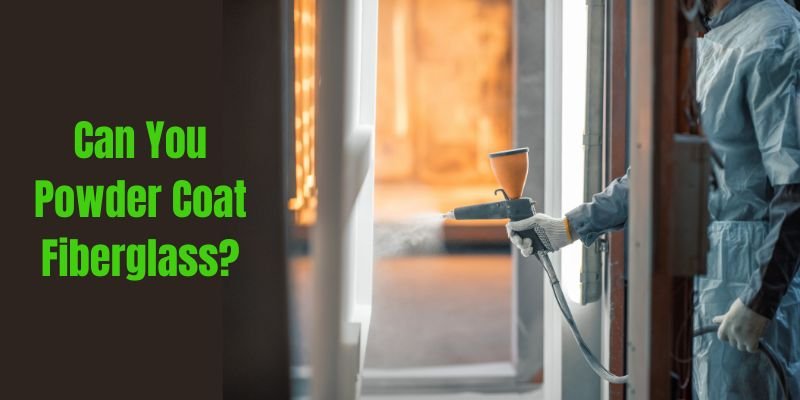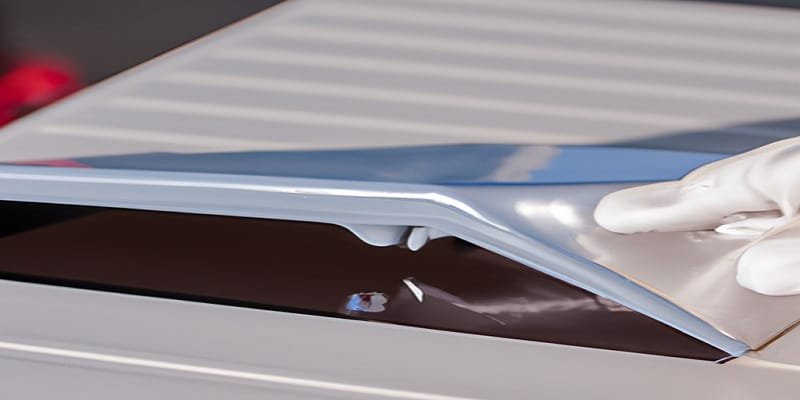Powder coating is a popular method of surface finishing that provides durability, aesthetic appeal, and protection to a wide range of materials. From metal components to plastic parts, powder coating has proven to be an effective and versatile coating solution.
However, when it comes to fiberglass, many people wonder if it is possible to powder coat this unique material. In this article, we will explore the feasibility of powder coating fiberglass and discuss the factors to consider when undertaking such a process.

Understanding Powder Coating
Before delving into whether fiberglass can be powder coated, let’s explore the powder coating process and its advantages. Unlike traditional liquid paint, powder coating does not require a solvent to keep the binder and filler parts in a liquid suspension. Instead, it is applied electrostatically, providing several benefits:
Durability
Powder coatings are known for their superior durability compared to liquid paints. They form a tough, chip-resistant finish that can withstand harsh environmental conditions, including UV exposure, chemicals, and abrasion.
Environmental Friendliness
Powder coating is an environmentally friendly option as it produces minimal volatile organic compounds (VOCs) and does not contain hazardous air pollutants (HAPs). Unused powder can also be reclaimed, reducing waste.
Versatility
Powder coatings offer a wide range of colors, textures, and finishes, allowing for customization and creativity. They can be used on various materials, including metals, plastics, and, in some cases, even wood.
Properties of Fiberglass
Fiberglass exhibits unique properties that differentiate it from other materials. It is lightweight, strong, and has excellent thermal and electrical insulation properties. However, these properties can also present challenges when attempting to powder coat fiberglass.
Fiberglass surfaces have a non-conductive nature, which makes it difficult for the electrostatically charged powder particles to adhere uniformly. Additionally, the flexibility of fiberglass can cause issues during the curing process, as it tends to expand and contract with temperature changes.
Can You Powder Coat Fiberglass?
Yes, fiberglass can be powder coated. Powder coating is a durable and versatile finishing process that can be applied to various materials, including fiberglass. But, there are several factors to consider before embarking on such a process.
One crucial factor is the type of fiberglass being used. Fiberglass comes in different forms, including woven mat, chopped strand mat, and fiberglass cloth. The composition and density of the fiberglass can affect the adhesion of the powder coating. Additionally, the condition of the fiberglass surface plays a vital role in the success of the powder coating application.
Another consideration is the temperature sensitivity of fiberglass. When exposed to high temperatures during the curing process, fiberglass can expand and contract, potentially causing the powder coating to crack or delaminate. Therefore, careful temperature control is necessary to ensure a successful powder coating on fiberglass surfaces.
Furthermore, the flexibility of fiberglass poses a challenge for powder coating. Unlike rigid materials such as metal, fiberglass can flex and bend, leading to the potential for cracking or peeling of the powder coating over time. This issue is particularly relevant in applications where the fiberglass substrate undergoes frequent movement or vibrations.
Preparing Fiberglass for Powder Coating
To achieve a successful powder coating on fiberglass, proper surface preparation is crucial. Here are the steps involved in preparing fiberglass for powder coating:
Cleaning
Begin by thoroughly cleaning the fiberglass surface to remove any dirt, grease, or contaminants. Use a mild detergent or a specialized fiberglass cleaner to ensure a clean substrate.
Sanding
Lightly sand the fiberglass surface to create a rough texture that promotes adhesion. Use a fine-grit sandpaper or a sanding pad to achieve an even and consistent surface.
Priming
Apply a high-quality primer designed for fiberglass surfaces. The primer helps create a bonding layer between the fiberglass and the powder coating, enhancing adhesion and durability.
Masking
Use masking tape or other suitable masking materials to protect areas that should not receive the powder coating. This step is essential for achieving clean and precise coating lines.
Static Charge
Ensure that the fiberglass surface is adequately grounded to facilitate the electrostatic attraction between the powder particles and the substrate.
Techniques for Powder Coating Fiberglass
When it comes to powder coating fiberglass, several techniques can be employed. Each technique has its advantages and considerations:
Tribocharging
Tribocharging involves the use of friction to charge the powder particles, making them adhere to the fiberglass surface. This technique can be useful for enhancing adhesion on non-conductive substrates like fiberglass.
Electrostatic Spray
Electrostatic spray guns charge the powder particles as they are sprayed onto the fiberglass surface. This technique provides excellent coverage and uniformity.
Fluidized Bed
The fluidized bed technique involves immersing the fiberglass object into a container filled with fluidized powder particles. The particles adhere to the preheated surface, creating a thick and even coating.
Electrostatic Fluidized Bed
This technique combines the benefits of fluidized bed coating and electrostatic charging. The fiberglass object is charged and then immersed in a fluidized bed of powder particles, resulting in an efficient and uniform coating.
Potential Issues and Solutions
Despite careful preparation and technique selection, several issues may arise when powder coating fiberglass. Understanding these challenges and implementing appropriate solutions is essential for successful results.
Some common issues include:
Poor Adhesion
Insufficient adhesion can occur due to surface contamination, inadequate surface preparation, or incompatible primer selection. To address this issue, ensure thorough cleaning, proper sanding, and use a primer specifically designed for fiberglass.
Cracking or Delamination
Fiberglass’s flexibility can lead to cracking or delamination of the powder coating. To mitigate this issue, consider using a powder coating with excellent flexibility and elasticity. Additionally, controlling the curing temperature and ensuring proper thickness of the coating can help minimize the risk of cracking.
Orange Peel Effect
The orange peel effect refers to a textured surface appearance resembling the skin of an orange. It can occur when the powder coating is applied too thickly or when the curing process is not properly controlled. To avoid this issue, apply the powder coating in thin, even layers and ensure accurate curing temperature and time.
Color Variation
Achieving consistent color across the fiberglass surface can be challenging. This issue may arise due to variations in the powder coating application or curing process. To address color variation, maintain uniform powder application, and follow precise curing specifications.
Powder Waste
Powder coating can generate waste, especially when coating complex or intricate fiberglass shapes. To minimize powder waste, consider using recovery systems or techniques like electrostatic flocking, where excess powder can be reclaimed and reused.
Conclusion
In conclusion, powder coating fiberglass is indeed possible, but it requires careful consideration of the unique properties and challenges associated with fiberglass. Proper surface preparation, suitable techniques, and diligent attention to curing parameters are vital for achieving a successful powder coating on fiberglass surfaces.
By understanding the specific requirements of fiberglass and implementing appropriate solutions, one can overcome potential issues such as poor adhesion, cracking, or color variation. With its durability, aesthetic appeal, and environmental benefits, powder coating offers an attractive option for enhancing and protecting fiberglass components.
So, if you’re wondering whether you can powder coat fiberglass, the answer is yes, but it’s essential to approach the process with the right knowledge, techniques, and attention to detail.
Frequently Asked Questions
1. Can any type of fiberglass be powder coated?
While it is generally possible to powder coat fiberglass, the type and condition of the fiberglass can impact the success of the coating. It is advisable to consult with professionals or experts in the field to determine the suitability of the specific fiberglass material for powder coating.
2. Can powder coating withstand the flexing of fiberglass?
Powder coatings can offer good flexibility and durability, but excessive flexing and bending of fiberglass can potentially cause the coating to crack or peel over time. Careful attention to proper curing, thickness, and selection of flexible powder coatings can help mitigate this issue.
3. Is powder coating more durable than traditional paint on fiberglass?
Powder coating generally provides better durability and resistance to environmental factors compared to traditional liquid paint. It offers enhanced protection against UV exposure, chemicals, and abrasion, making it a popular choice for various applications, including fiberglass components.
4. Can I apply multiple layers of powder coating on fiberglass?
Applying multiple layers of powder coating is possible but should be done with caution. Each layer needs to be properly cured and adhere well to the previous layer. Excessive coating thickness or inadequate curing can lead to issues such as cracking or uneven appearance.
5. Can I remove powder coating from fiberglass if needed?
Yes, powder coating can be removed from fiberglass surfaces if necessary. Techniques such as sandblasting or chemical stripping can be used to remove the coating. However, it is essential to follow proper safety guidelines and seek professional assistance for effective and safe removal procedures.


